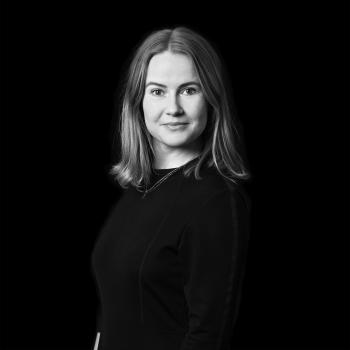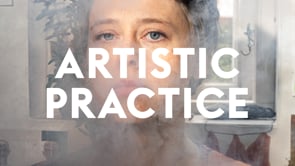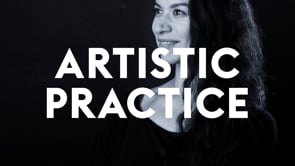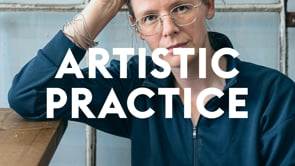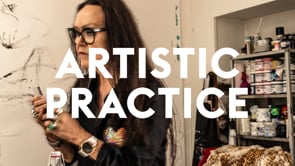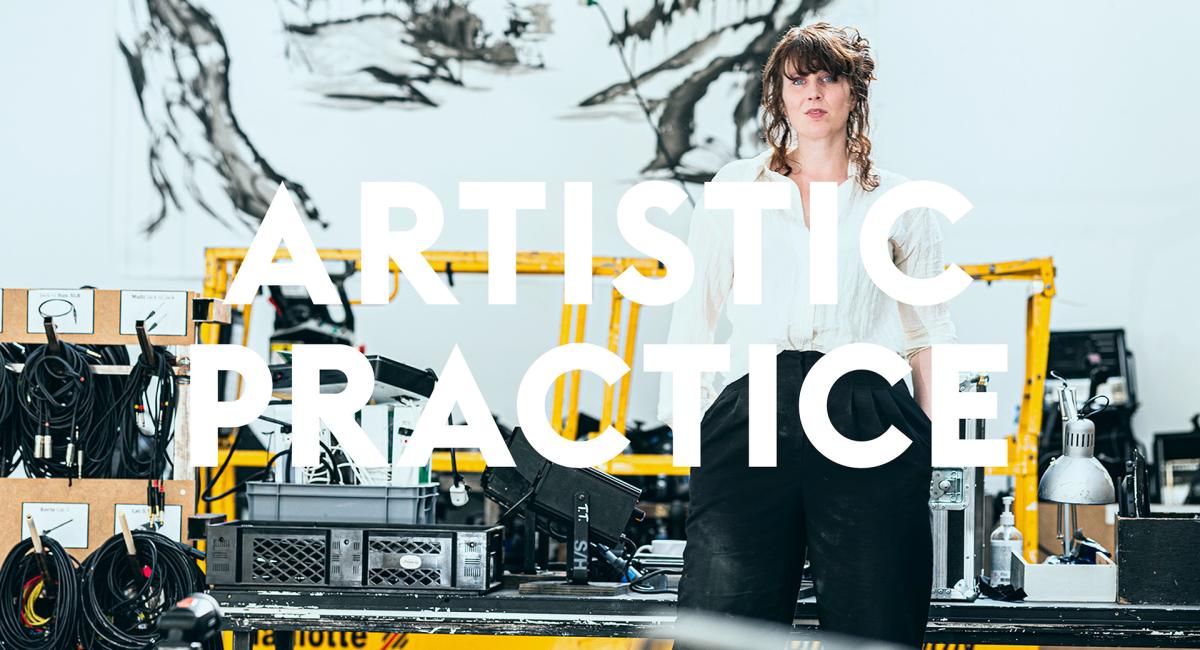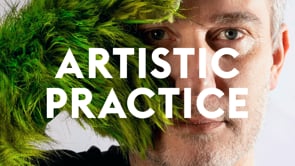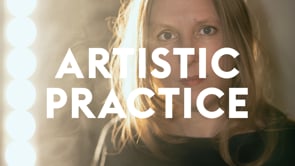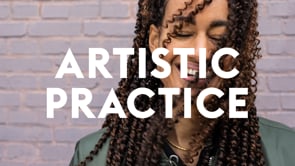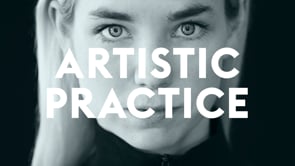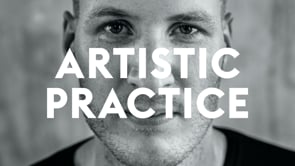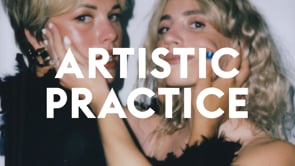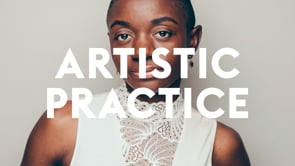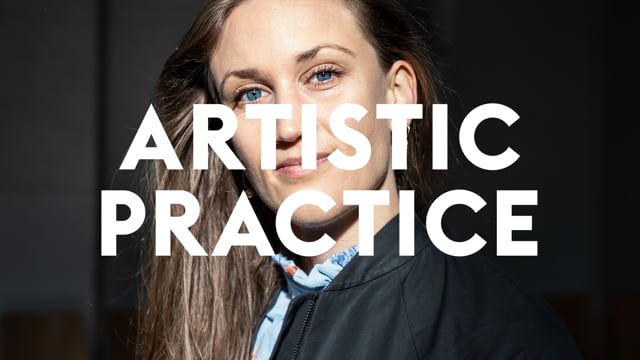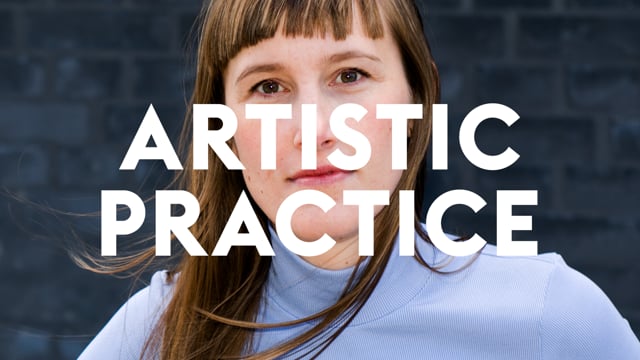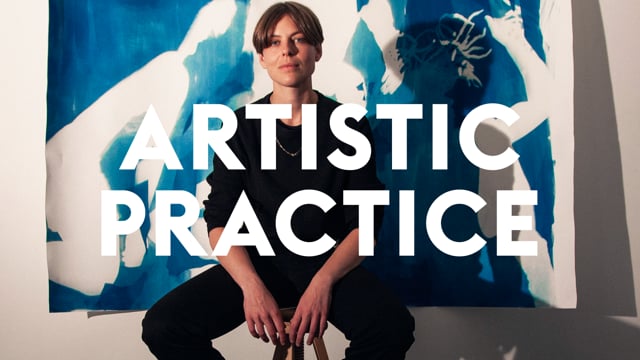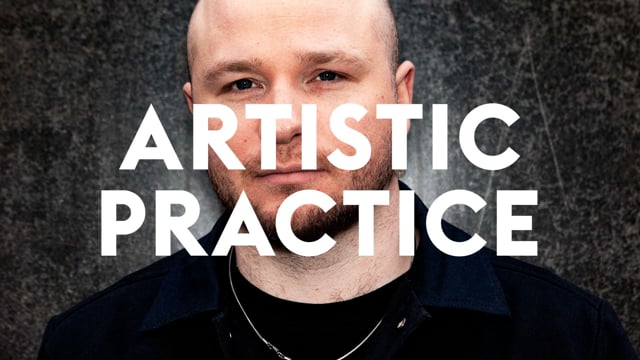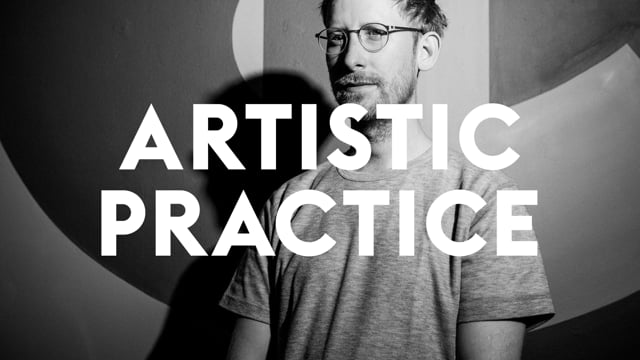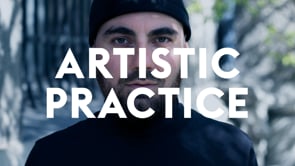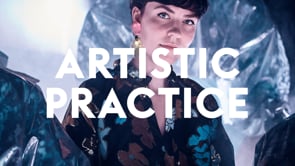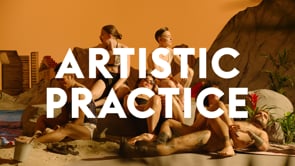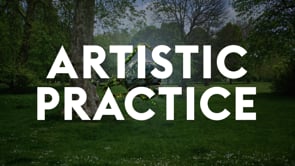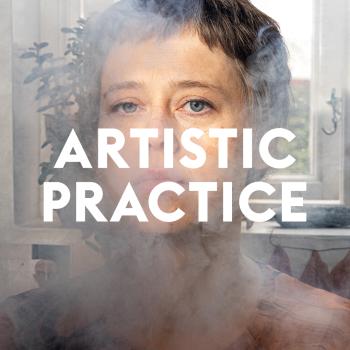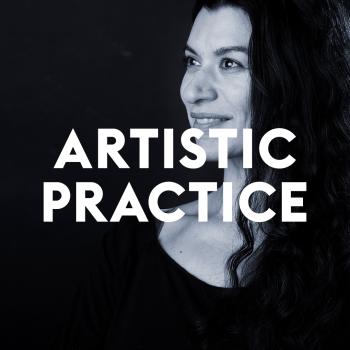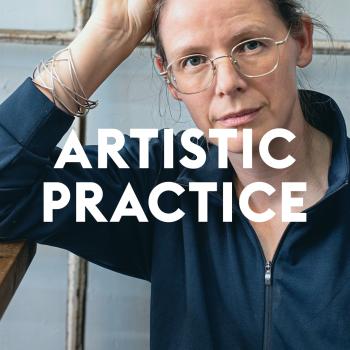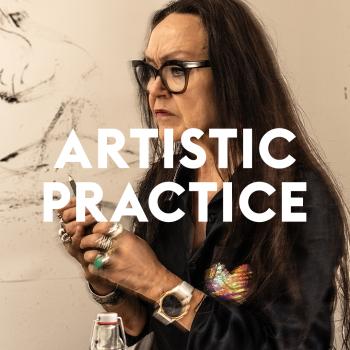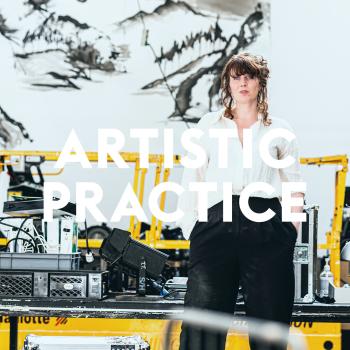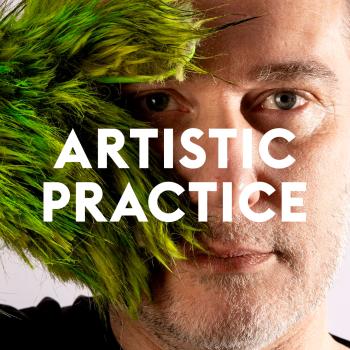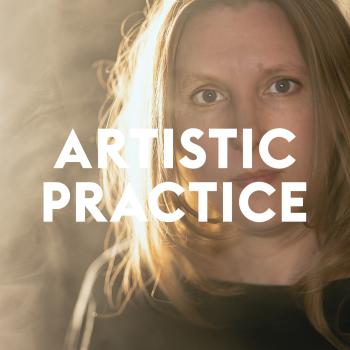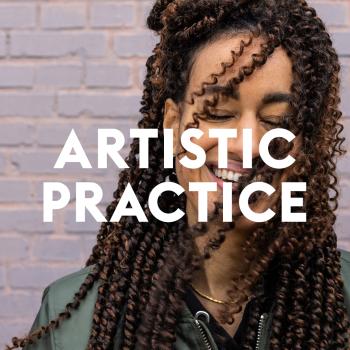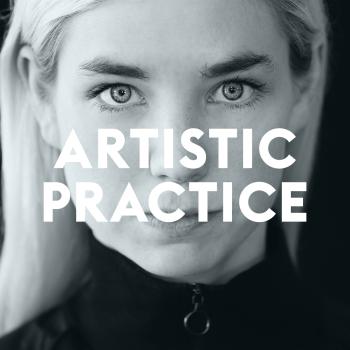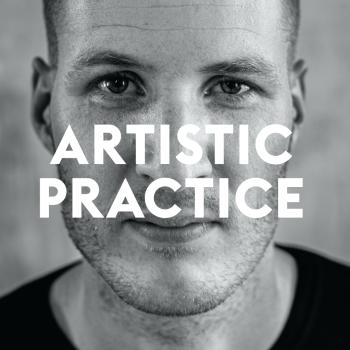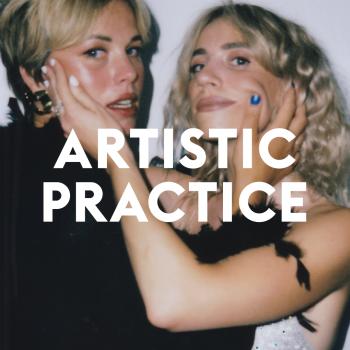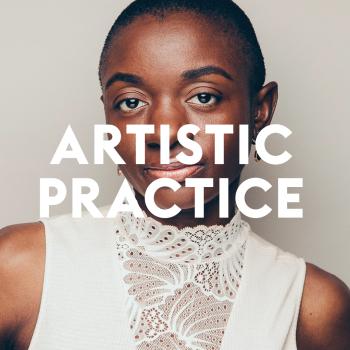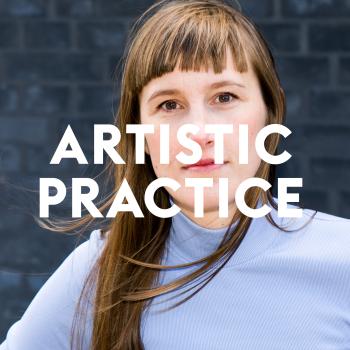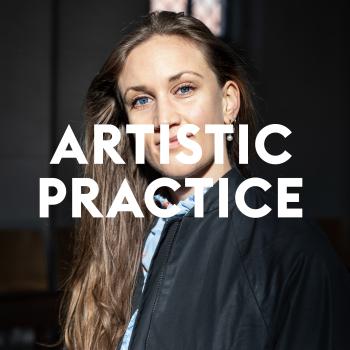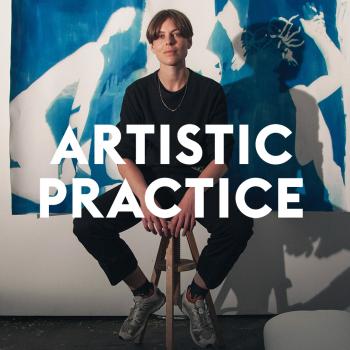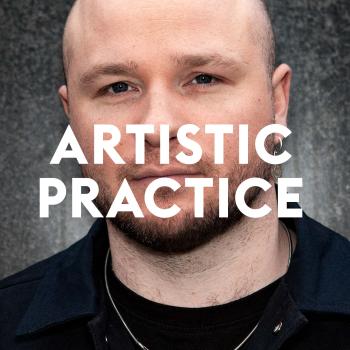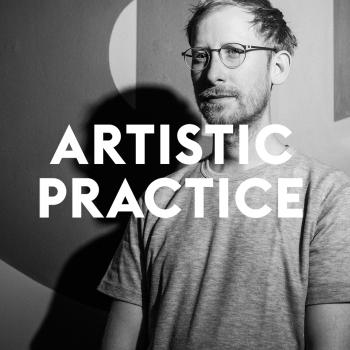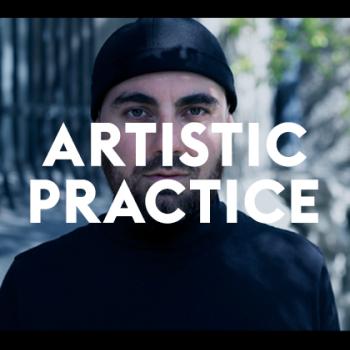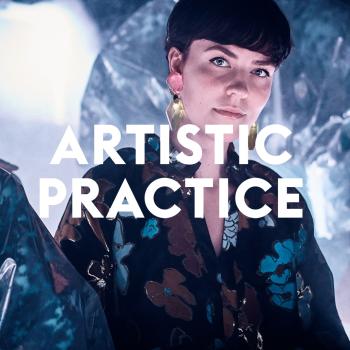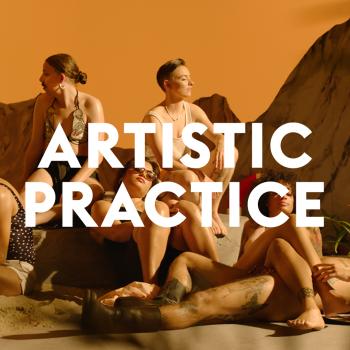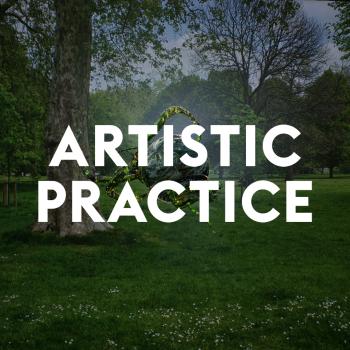Artistic Practice
The Artistic Practice portrait series was launched in 2019 and is a way to give better exposure to talented artists as they seek to establish themselves in Denmark and abroad.
The artists appearing in the series have all been given the chance to participate in a professional-development programme consisting of: an interview salon with an internationally recognised artistic conversation partner of their choice, a portrait film based on the conversation and help contacting potential partners in Denmark and abroad.
The portraits provide insight into the artists as individuals while also presenting their body of work and thus are a form of visual presentation for use by potential partners: curators, producers, festivals etc. The Bikuben Foundation conceived of Artistic Practice as a means to internationalise Danish art, and its aim is to give exposure to participating artists as they seek to establish themselves.
View the ARTISTIC PRACTICE portrait films below.
In 2022, Art Hub Copenhagen assumed responsibility for the visual-arts portion of the Artistic Practice programme.
Read more here.
Artists who have been through the ARTISTIC PRACTICE programme:
Performing and visual artist Freya Sif Hestnes
Artistic Practice with performing and visual artist Freya Sif Hestnes: "You can't run away from your bodily experiences"
Freya Sif Hestnes combines the language of performing and visual arts as she expands both the aesthetics and the role of the scenographer in free movement between the arts, institutions and the free, independent field.
It is a multifaceted artistic practice that also unfolds as a method when the examination of concrete materials becomes a co-creator of the ideas Hestnes deals with.
Artist and performer Lina Hashim
Born to Iraqi parents, Lina Hashim came to Denmark as a refugee in 1992. She has sought to balance being a woman with Middle Eastern roots and life in a Western culture since then – and, eventually, found a way to do it as an artist. In her work, personal and performative, she uncompromisingly explores and challenges her own experiences and the fastened notions of others. The figures of the girl and the woman are central to Lina Hashim’s work. Deriving material from her own life, she advances a persistent feminist critique of the prevailing notions and expectations of Muslim women. Over the years, this critical gaze has expanded to include Western prejudices and, most recently, the art world’s alienation of women with a Muslim cultural background.
Artist Hannah Heilmann
Hannah Heilmann uses her performances and works – often made of cheap, ephemeral materials – to explore our relationship to the object and commodity. The body is set against its surroundings, behavior is on a continuum between a sense of value and acquisitiveness, the gallery can take the form of a showroom, and consumption is connected to both desire and shame.
Visual artist Jessie Kleemann
Kamiks, kayaks, seal fat and dog sleds. Jessie Kleemann lets a number of familiar cultural symbols shine through in her art – but not to summon nostalgia for a lost, unspoilt, Greenland; she uses and challenges them, rather, in a situation simultaneously performative, sculptural and embodied, taking them on to renew them for both herself and her audience. Jessie Kleemann is particularly keen on bringing her own cultural heritage and identity into play for her audience. She uses her own body to arouse our memory and our understanding of our world and relations to pass on – especially, perhaps, to the younger generation – a wise, bodily, language about Greenland for them to reflect on and to use.
ARTISTIC PRACTICE was initiated by the Bikuben Foundation and was run by us from 2019 through spring 2022. Since then, Art Hub Copenhagen has administered the program in the visual arts.
Hybrid artist Nathalie Mellbye
Artistic Practice, with hybrid artist Nathalie Mellbye: “If you really want to develop something new, failure is the greatest gift.”
From scenographer to theater director to artistic director. Nathalie Mellbye is artistic director at the Sort/Hvid [Black-and-White] theater, located in Copenhagen’s former meatpacking district. Working out from her background as a scenographer, she has managed, in the past few years, to distinguish herself as a stage designer with her expressive visual and immersive works, which are simultaneously poetic and mercilessly raw. This hybrid artist combines an array of professional specializations and formats – within herself and embedded in collective creation practices – as dance performances, theatrical presentations, music, performance art and installation art all come into being as new forms of experience.
Artist Kristoffer Akselbo
Kristoffer Akselbo’s conceptual works stem from his long-term artistic investigation of confrontation and transgression – including transgressing the boundary between the work of art and the audience. Boundaries or thresholds are central to Kristoffer Akselbo’s art practice. His works move across the border of the real and unreal and the comical and repellant, shifts Akselbo sees as possessing the potential to have an emotional impact on the audience. For Akselbo this is the point of his art: to have an affective impact as indelible as a tattoo. He wants to have a lasting effect on his audience, provide experiences that are stored in our memories.
ARTISTIC PRACTICE was initiated by the Bikuben Foundation and was run by us from 2019 through spring 2022. Since then, Art Hub Copenhagen has administered the program in the visual arts.
Theatre director Anja Behrens
Artistic Practice with director Anja Behrens: “Performing arts can bring us into contact with the emotions we are carrying within us.”
The artistic practice of theatre director Anja Behrens springs forth from the disturbing existential fundamental tones that we’re not always able, during our everyday lives, to get in touch with. For this reason, her method involves working with rituals and visual abstractions that bring the body's intuition to light. This is also why Anja Behrens insists that her contribution to artistic processes has to do with refraining from making intellectual analyses in the introductory phases, so that intuition and the visual aspect can open the sensory faculties – for her collaborators in the artistic process as well as for the audience.
Visual and performance artist Linda Lagminan
Artistic Practice featuring visual and performance artist Linda Lagminan: “those who do not travel never arrive.”
Using myriad expressive forms and artistic practices, Linda Lamignan explores concepts of wandering and the diaspora, transformation and love, in works that tell stories of floating between worlds.
Sculptures made of paraffin wax encircled by brightly coloured fabrics, complex musical compositions, video works inspired by the humour of B movies, and a precise ongoing performative practice. A list that represents just a fraction of Norwegian-Nigerian Linda Lamignan’s oeuvre, indicative of the artist’s versatility and range.
Visual artist Marie Munk
Marie Munk’s artistic practice and large-scale installations are centered where the human body meets future technology. Using silicone as material and as metaphor for our flesh and blood, she is investigating what it is that biologically defines us as human beings in an unknown future. Eight embryos in artificial womb-machines that bring the pregnancy to term and stimulate the growth of babies outside the human body. A gigantic, inflatable placenta with pulsating blood vessels and moist membranes that connect people through a shared experience of being a corporeal body in a technological world. A transformed baroque building that has been converted into a corporeal data center – filled with life-giving and caring umbilical cords. A work of art that refers to science fiction and to contemporary spirituality and situates the visiting viewers in front of a surrealist vision, where modern people have coalesced with technology.
Visual artist Jens Settergren
Jens Settergren’s process, practice and art are investigating the image’s power and technology’s being. This is transpiring through an unusually extensive variation of material choices and forms of expression that are related to people's notions about the world in the age of images.
As an inter-disciplinary artist, Jens Settergren is working with sculptures, installations, and video works as he poses questions about collective fantasies, science fiction and the mythologies of our current time.
Artiststudio How To Kill A Dog
Artiststudio How To Kill A Dog is on a mission to inhabit the present space of theater stages, so that the intimate becomes political. They are creating metaphors that set myths about women free, and through their insistent humor, musical intensity and confrontational political movement, they are aiming to change something in the audience to create space for the young woman's voice.
Jennifer Vedsted Christiansen and Emma Sehested Høeg from How To Kill A Dog have been selected for Bikubenfonden's “Artistic Practice” series – for particularly promising artistic practices. The two artists are insisting on having fun, while they – through their concert performances – are breaking down the boundaries that usually define performance arts.
Actor Marie-Lydie Nokouda
Marie-Lydie Nokouda creates neo-Afro-Danish drama. With ‘Black To Normal’, Nokouda, clearly taking her mark in the artistic movement, ‘Afrofuturism’, is offering her bid on how diversity can be rendered mainstream in Danish stage arts. Marie-Lydie Nokouda is the initiator and the leader of the new artist-platform, ‘Black To Normal’: “There needs to be variety and diversity in all phases of our artistic practice, and this is a project that has to be carried on continuously. I’ve been missing a community with other artists who look like me in the stage arts, and this has always caused me to think: why aren’t there more like me in our branch? With Black to Normal, I am managing to have this need met. Our new performative readings constitute sites of rendezvous for an incipient community of Afro-Danish artists. There’s a clear sense that this is an enhancing element, and that this is a necessity in the branch.”
Scenographer, room and costume designer Ida Grarup
"As an artist, you have a platform - and you’ve got to be willing stand by what you’re saying from that platform.” This is the way that scenographer, space- and costume-designer Ida Grarup puts it. She views theater as a space for investigation and as an empathy-machine, which sets the stage for somebody, as a member of the audience, to wonder, to fall into doubt and to see the world with different eyes, for a moment. “Theater can expand the boundaries of what reality can contain, and is consequently far more powerful than merely being a mirror of our reality,” she declares. Ida Grarup is working in a multidisciplinary way and often with a stringent concept. She is always co-creative, from the very first incipient steps in the genesis of a performance, so that she can optimally fasten themes onto the scenography and play her role in shaping the message that the performance is conveying. In her scenographies, she is looking for a sensory saturation that can enhance the feeling of being present in the now.
Choreographer Hilde Ingeborg Sandvold
Hilde Ingeborg Sandvold conceives her choreography into the many layers of what it means to be human: into the cognitive, into the respiration, into the gaze, and into the way our flesh reacts in every move we make. She yearns to become even better at understanding what it means to be a body. In Artistic Practice, she says: ”It’s coming from a wish to feel my body, and to be able to control it, somehow. I just want to understand more clearly what it means to be a body and how being a body is shaping our trajectories.” What is particularly characteristic of Sandvold’s praxis is that she creates different types of bodies and states of being on stage. She’s working on two levels: initially, she choreographs and sets form to the body’s movements, and subsequently adds a societal context to the choreography. She amalgamates these two levels with the use of words in order to flesh out the message. This approach could be seen in a particularly distinct way in her performance, "Grått” [Gray] - a choreographic work centred on the experience of stress. The performance put words and movement on the feeling of missing contact with the body and on how stress affects us physically and mentally. Here, the audience was invited into a room where the dance and the music were interwoven with an intense self-observation of a body that needs to rediscover its own cohesive force.
Artist and choreographer Jules Fischer
Meet artist and choreographer Jules Fischer in this Artistic Practice portrait. The portrait is based on the work Vanitas, which is a dedication to the queer and trans community. In Vanitas, Jules uses performers with very different backgrounds, who communicate ambivalent feelings and division with their disparate body expressions and movement patterns – conditions that generally characterize Fischer's artistic practice.
Artist Alexander Brix Tillegreen
The experiential realm of listening and psychological sound illusions are central elements in the sensory installations of Alexander Brix Tillegreen. His sound works make the listener aware of their own subjective, linguistic, mental and cultural references and the key role they play in our perception and understanding of the world. Sound compositions are pivotal to the practice of Alexander Brix Tillegreen – the reference point for the artistic investigations he conducts across a range of media, including sculpture, graphics, painting, installation and performance.
Visual artist Hannibal Andersen
Visual artist Hannibal Andersen works in the crossroads between economics, politics and technology. In his practice, he tries to illuminate and question the structural power relations in society that we take for granted. He puts both video, sound, text and performance into play with everyday objects, and often 'context' and 'place' will play a decisive role in his works.
Theater director Sargun Oshana
With an immens political awareness, playful scenic experiments and a strong bodily approach to the instructional work, theater director Sargun Oshana reinventes the space of the stage and the contact and relationship to the audience again and again. Oshana focuses on boundary breaking and diversity in a broad sense, and his performances deal with ethnicity, sexuality, gender and class. He is particularly concerned with post-migration.
Choreographer and creator Gunilla Lind
Choreographer and creator Gunilla Lind creates her works in a unique blend of modern dance, physical theater, fashion, light art and architecture. In her extravagant stage settings she focuses on artificiality and body idealization in a digitalized era, creating bold and troubled sensory spaces.
Artist duo Kirsten Astrup and Maria Bordorff
Artist duo Kirsten Astrup and Maria Bordorff create what they call film cabarets, that are described as both poetic and political. Their works are full of flamboyance and decadence, humor and seriousness. They blend genres and expressions in their artistic practice and use music and queer manifestations to address socio-political themes about the (Scandinavian) welfare society's deroute and its associated loss of collective values.
Visual artist Jakob Kudsk Steensen
Jakob Kudsk Steensen is a Danish artist based in New York with a special interest in how imagination, technology and ecology intertwine. His works range from immersive VR ecosystems to mixed reality installations bridging physical and digital worlds, which invite audiences to enter new ecological realities.
